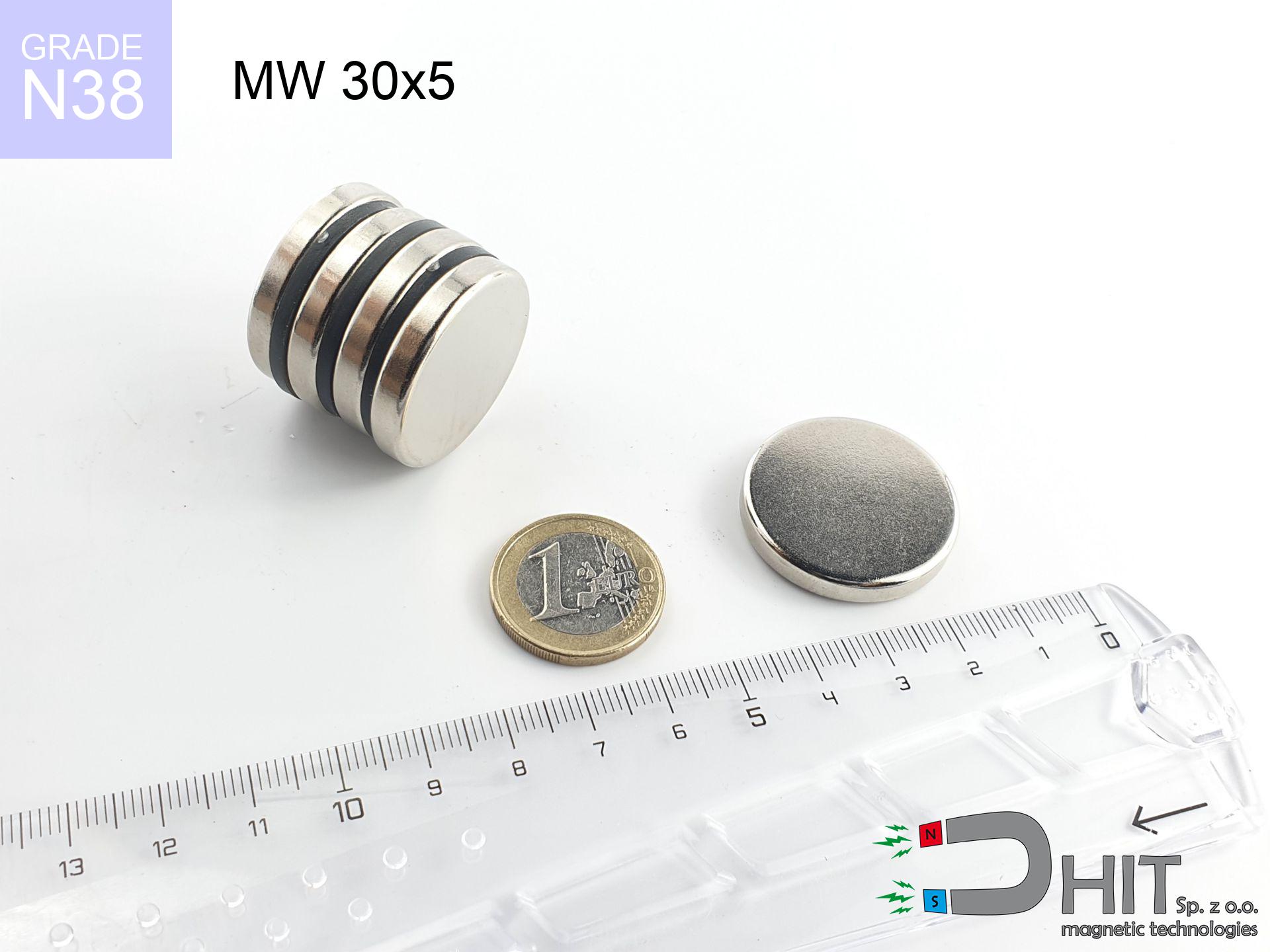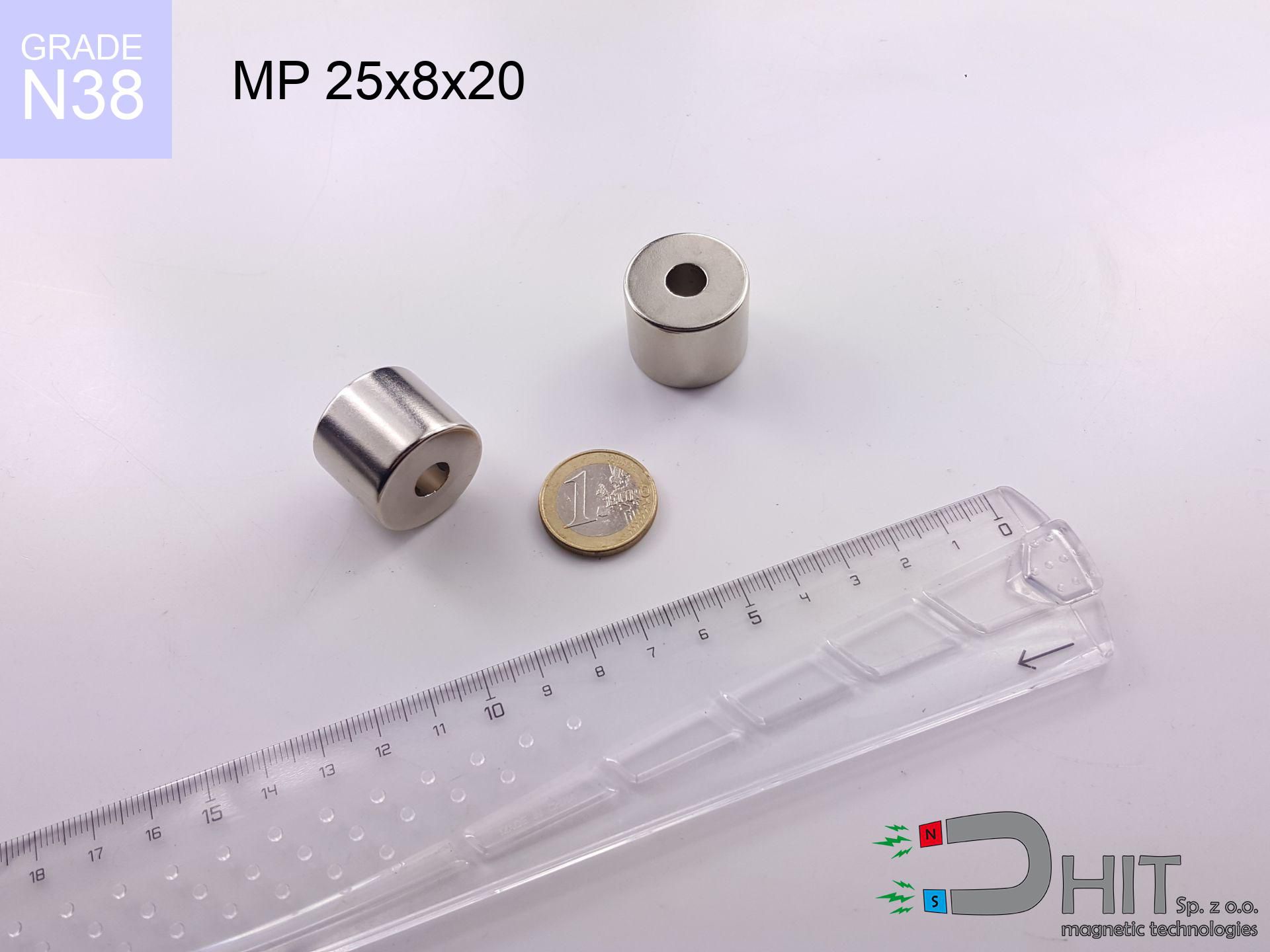MPL 50x20x5 / N38 - lamellar magnet
lamellar magnet
Catalog no 020473
GTIN: 5906301811930
length [±0,1 mm]
50 mm
Width [±0,1 mm]
20 mm
Height [±0,1 mm]
5 mm
Weight
37.5 g
Magnetization Direction
↑ axial
Load capacity
12.49 kg / 122.49 N
Magnetic Induction
197.73 mT
Coating
[NiCuNi] nickel
18.94 ZŁ with VAT / pcs + price for transport
15.40 ZŁ net + 23% VAT / pcs
bulk discounts:
Need more?Want to negotiate the price?
Call us +48 22 499 98 98 or write via form on the contact page. Test the magnet's power with our power calculator.
Orders placed by 14:00 are shipped the same day.
MPL 50x20x5 / N38 - lamellar magnet
Magnetic properties of material N38
Physical properties of NdFeB
Shopping tips
Thanks to their high strength, flat magnets are commonly used in structures that require strong holding power.
The standard temperature resistance of flat magnets is 80 °C, but depending on the dimensions, this value rises.
Additionally, flat magnets commonly have special coatings applied to their surfaces, e.g. nickel, gold, or chrome, for enhancing their durability.
The magnet with the designation MPL 50x20x5 / N38 i.e. a magnetic strength 12.49 kg weighing just 37.5 grams, making it the excellent choice for projects needing a flat magnet.
Contact surface: Thanks to their flat shape, flat magnets ensure a larger contact surface with adjacent parts, which is beneficial in applications requiring a stronger magnetic connection.
Technology applications: These magnets are often applied in different devices, e.g. sensors, stepper motors, or speakers, where the thin and wide shape is necessary for their operation.
Mounting: The flat form's flat shape makes it easier mounting, particularly when there's a need to attach the magnet to some surface.
Design flexibility: The flat shape of the magnets gives the possibility designers a lot of flexibility in placing them in devices, which can be more difficult with magnets of other shapes.
Stability: In some applications, the flat base of the flat magnet may offer better stability, minimizing the risk of sliding or rotating. It’s important to keep in mind that the optimal shape of the magnet is dependent on the specific project and requirements. In some cases, other shapes, such as cylindrical or spherical, may be a better choice.
Magnets have two poles: north (N) and south (S), which interact with each other when they are different. Poles of the same kind, such as two north poles, repel each other.
Due to these properties, magnets are regularly used in electrical devices, such as motors, speakers, sensors, or magnetic locks. Neodymium magnets stand out with the greatest strength of attraction, making them ideal for applications requiring strong magnetic fields. Additionally, the strength of a magnet depends on its size and the material it is made of.
It’s worth noting that high temperatures can weaken the magnet's effect. Every magnetic material has its Curie point, meaning that once this temperature is exceeded, the magnet stops being magnetic. Interestingly, strong magnets can interfere with the operation of devices, such as compasses, magnetic stripe cards or electronic devices sensitive to magnetic fields. Therefore, it is important to exercise caution when using magnets.
Advantages and disadvantages of neodymium magnets NdFeB.
Apart from immense strength, neodymium magnets have the following advantages:
- They do not lose strength over time - after 10 years, their power decreases by only ~1% (theoretically),
- They are extremely resistant to demagnetization by external magnetic field,
- Thanks to the shiny finish and nickel, gold, or silver coating, they have an aesthetic appearance,
- They have very high magnetic induction on the surface of the magnet,
- By using an appropriate combination of materials, they can achieve high thermal resistance, allowing them to operate at temperatures up to 230°C and above...
- The ability for precise shaping or customization to specific needs – neodymium magnets can be produced in many variants of shapes or sizes, which expands the range of their possible uses.
- Wide application in modern technologies – are utilized in hard drives, electric motors, medical equipment or very highly developed apparatuses.
Disadvantages of neodymium magnets:
- They can break as they are extremely fragile when subjected to a strong impact. If the magnets are exposed to impacts, we recommend using magnets in a metal holder. The steel housing in the form of a holder protects the magnet from impacts and simultaneously increases its overall strength,
- They lose strength at high temperatures. Most neodymium magnets experience permanent loss of strength when heated above 80°C (depending on the shape and height). However, we also offer special magnets with high temperature resistance, up to 230°C,
- They rust in a humid environment. For outdoor use, we recommend using waterproof magnets, such as those made of rubber or plastic,
- Limited ability to create threads or complex shapes in the magnet - the use of a housing is recommended - magnetic holder
- Potential hazard associated with microscopic parts of magnets can be dangerous, when accidentally ingested, which becomes significant in the context of child safety. Furthermore, miniscule components of these devices are able to hinder the diagnostic process after entering the body.
Be Cautious with Neodymium Magnets
Under no circumstances should neodymium magnets be placed near a computer HDD, TV, and wallet.
Strong magnetic fields emitted by neodymium magnets can destroy magnetic storage media such as floppy disks, credit cards, magnetic ID cards, cassette tapes, video tapes, or other devices. They can also damage televisions, VCRs, computer monitors, and CRT displays. Avoid placing neodymium magnets in close proximity to electronic devices.
Neodymium magnets can demagnetize at high temperatures.
Even though magnets have been observed to maintain their efficacy up to temperatures of 80°C or 175°F, it's essential to consider that this threshold may fluctuate depending on the magnet's type, configuration, and intended usage.
It is crucial not to allow the magnets to pinch together uncontrollably or place your fingers in their path as they attract to each other.
Magnets will attract each other within a distance of several to about 10 cm from each other. Remember not to place fingers between magnets or in their path when attract. Magnets, depending on their size, are able even cut off a finger or alternatively there can be a significant pressure or even a fracture.
Neodymium magnets are the strongest magnets ever created, and their power can shock you.
Read the information on our website on how to properly utilize neodymium magnets and avoid significant harm to your body and unintentional damage to the magnets.
Neodymium magnets are extremely fragile, resulting in breaking.
Neodymium magnetic are fragile as well as will shatter if allowed to collide with each other, even from a distance of a few centimeters. Despite being made of metal and coated with a shiny nickel plating, they are not as hard as steel. At the moment of connection between the magnets, small sharp metal fragments can be propelled in various directions at high speed. Eye protection is recommended.
Avoid bringing neodymium magnets close to a phone or GPS.
Magnetic fields generated by neodymium magnets interfere with compasses and magnetometers used in navigation, as well as internal compasses of smartphones and GPS devices.
Dust and powder from neodymium magnets are highly flammable.
Avoid drilling or mechanical processing of neodymium magnets. Once crushed into fine powder or dust, this material becomes highly flammable.
Neodymium magnets are not recommended for people with pacemakers.
In the case of neodymium magnets, there is a strong magnetic field. As a result, it interferes with the operation of a heart pacemaker. Even if the magnetic field does not affect the device, it can damage its components or deactivate the entire device.
If you have a nickel allergy, avoid contact with neodymium magnets.
Studies show a small percentage of people have allergies to certain metals, including nickel. An allergic reaction often manifests as skin redness and rash. If you have a nickel allergy, try wearing gloves or avoid direct contact with nickel-plated neodymium magnets.
Neodymium magnets should not be in the vicinity children.
Not all neodymium magnets are toys, so do not let children play with them. Small magnets pose a serious choking hazard or can attract to each other in the intestines. In such cases, the only solution is to undergo surgery to remove the magnets, and otherwise, it can even lead to death.
Safety precautions!
In order for you to know how strong neodymium magnets are and why they are so dangerous, read the article - Dangerous powerful neodymium magnets.








